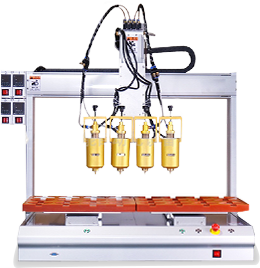

Aluminum alloy heat dissipation profile stamping parts are made of high thermal conductivity 6063 and 6061 aluminum alloys as the base material, and are made through precision extrusion and stamping processes. The aluminum alloy profiles are punched, slotted, bent, and processed through molds to construct heat dissipation structures such as dense fins and guide grooves. They are widely used in electronic equipment (such as CPU heat sinks, power modules), industrial computers, and new energy vehicle electronic control systems. With the excellent thermal conductivity of aluminum alloy (thermal conductivity coefficient of 160-200W/(m・K)) and the efficient heat dissipation structure of stamping, heat can be quickly exported, the operating temperature of the equipment can be reduced, and a stable and long-term thermal management solution is provided for high-heat components, which helps to improve equipment performance and extend life.
II. Product Features
(I) Core Advantages
1. Efficient heat conduction and heat dissipation: The aluminum alloy substrate has a high thermal conductivity, and is matched with stamped dense fins (fin density can reach 3-5 pieces/cm), which increases the heat dissipation area, improves the heat exchange efficiency by 40%-60%, and quickly reduces the temperature of electronic components. For example, the CPU radiator can reduce the core temperature by 15-25℃.
2. Lightweight and high strength: The density of aluminum alloy is only 2.7g/cm³, which is 30%-40% lighter than copper heat sinks. After stamping and strengthening, the tensile strength reaches 200-260MPa, which meets the requirements of equipment lightweight and structural load-bearing, and is suitable for portable electronic devices and vehicle-mounted electronic control systems.
3. Precision adaptability: The mold processing accuracy is ±0.05mm, and the stamping part size and fin gap are accurate. It can be seamlessly matched with components such as fans and heat pipes to achieve modular integration, such as industrial computer heat dissipation modules, to ensure the compact layout and efficient heat dissipation coordination of the equipment.
(II) Characteristics comparison table
Compare dimensions | Aluminum alloy heat dissipation stamping parts | Copper heat sink | Plastic heat sink |
thermal conductivity | 160 - 200W/(m·K) | 380 - 400W/(m·K) | ≤2W/(m·K) |
weight | Lightweight (weight reduction 30% - 40%) | Heavy | Extremely light |
strength | Tensile strength 200 - 260MPa | Tensile strength 150 - 200MPa | Low |
cost | Medium (significant advantages after mold sharing) | High | Low |
adaptability | Precision stamping, excellent adaptability | Difficult to process | Easy to deform变形 |
III. Product Details
(I) Process Flow
1. Profile Extrusion: Select 6063/6061 aluminum alloy bars, and extrude heat dissipation profile blanks through 1000-2000T extruders to form basic fin structures to ensure uniform thermal conductivity.
2. Mold Design: According to the heat dissipation requirements, stamping dies are designed, integrating punching (heat dissipation holes, mounting holes), grooving (flow guide grooves), and bending (fin shaping) functions. After EDM and nitriding treatment, the mold life exceeds 500,000 times.
3. Stamping Forming: On a 200-600T precision punching machine, the profile blanks are stamped, and the servo system accurately controls the pressure to ensure that the fin height and gap tolerances are ±0.05mm, realizing efficient heat dissipation structure forming.
4. Surface treatment: Use anodizing (natural color, black, purple, etc.) to form a 5-10μm oxide film to enhance corrosion resistance and aesthetics, while improving the surface radiation heat dissipation capacity, such as the purple oxide film adapted to the needs of personalized electronic equipment.
(II) Applicable scenarios
Consumer electronics: As a CPU radiator and graphics card heat dissipation module, the lightweight and efficient heat dissipation structure meets the dual needs of laptops and game consoles for heat dissipation and portability, such as a well-known gaming laptop radiator, which achieves a thin and light body and high-performance operation through this stamping part.
Industrial control equipment: Processing industrial computers and server heat dissipation modules, precisely adapting to the internal space of the equipment, efficiently exporting the heat of the CPU and power module, and ensuring 7×24 hours of stable operation, such as the heat dissipation components in industrial automation control systems.
New energy vehicles: Manufacturing heat dissipation parts for electronic control systems (such as MCU, BMS), aluminum alloy is lightweight and weather-resistant, and the stamping fins are used to quickly dissipate heat, adapt to the high temperature and vibration environment of the vehicle, and improve the reliability of the electronic control system.
(III) Quality Control
Implement the "three inspections and one test" system: the first piece is inspected for thermal conductivity uniformity with an infrared thermal imager, the fin size and surface flatness are measured every 300 pieces during the process inspection, and 100% of the finished products are subjected to salt spray test (anodized parts ≥ 1000 hours) and thermal conductivity test (thermal conductivity coefficient deviation ≤ 5%). Passed ISO 9001 quality management system certification, key indicators meet GB/T 15115 aluminum alloy processing standards, providing reliable "cold power" for electronic equipment thermal management.
 Headquarters tel.
Headquarters tel. E-mail.
E-mail.